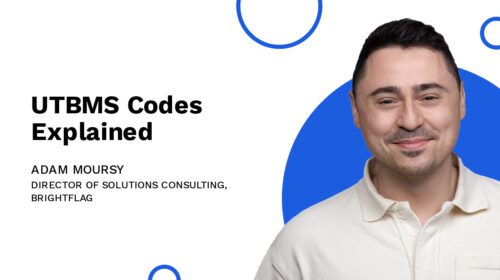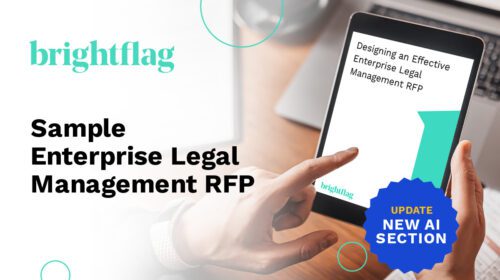What is LEDES? An Introduction to the Electronic Billing Format for Legal Invoices
LEDES files represent a significant portion of legal invoices alongside the more universally recognized PDF format.
Despite their less frequent use by legal professionals outside the U.S., the presence of LEDES files in global legal practices cannot be ignored. This article delves into the origins, structure, and implications of LEDES billing, equipping you with the knowledge to navigate its advantages and limitations effectively.
What are LEDES Files?
A LEDES file is a standardized format for legal invoices that makes it easier for law firms to send, and for in-house teams to receive, bills electronically. LEDES, or the Legal Electronic Data Exchange Standard, was created by the LEDES oversight committee (LOC) in 1995.
LEDES files were born out of a need to standardize the many different ways law firms submitted bills. Today, it is recognized as the industry standard format for legal electronic billing.
In addition to making electronic billing more efficient, LEDES files are also designed to help firms and in-house teams understand and analyze their legal spend. One of the standout features of LEDES files is their incorporation of the Uniform Task-Based Management System (UTBMS) codes. With UTBMS codes, each phase of a matter, each task, and even each activity is coded. These codes shed light on where and how legal budgets are spent.
By clearly categorizing legal task codes using UTBMS codes, LEDES files help in-house teams gaina detailed overview of different phases of work on a matter and their associated costs.
LEDES File Formats to Know
For those committed to the do-it-yourself ethos, you can manually create a valid LEDES invoice with nothing more than a spreadsheet and text editor. But now that we’re more than 20 years beyond the standard’s debut, nearly all leading law firm billing systems and corporate legal spend management platforms offer features dedicated to supporting LEDES invoices.
There are various LEDES file formats, with some formats including more fields to better accommodate international legal spend. You should request that your outside counsel invoice you using the LEDES format best suited for your tax and regulatory situation.
LEDES 1998B
This oldest and simplest of LEDES eBilling formats remains the most broadly used standard. It includes 24 data fields but lacks support for tax information and alternative fee arrangements (AFAs). It was last updated in 2014, according to the LEDES Oversight Committee.
LEDES 1998BI
Support for single tax was the critical upgrade here, effectively creating a “98B” clone that was fit for use outside the United States (where legal services are uniquely tax-exempt). As of its 2020 update, this format now contains 52 data fields.
LEDES XML 2.0
Whereas LEDES 1998BI produces documents in text file format (.txt), this version used extensible markup language (.xml) to significantly expand the number of data fields to 172. This format can handle complicated tax scenarios and bill or credit hours worked. Its most notable updates include support for multiple taxes per line item and AFA compatibility.
As of March 2023, the LEDES Oversight Committee updated the XML 2.0 format to increase the number of data fields from 153 to 172, and to match its base data fields to those found in XML 2.1 and 2.2. This allows for greater consistency and usability across file formats.
LEDES XML 2.1
This version now contains 206 data fields, with increasingly nuanced support for tax, timekeeper, and regulatory issues.
The latest update, made in March 2023, takes a new approach to how outside counsel submits their rates, to enable handling of timekeeper rates based on the current exchange rate
LEDES XML 2.2
This version is nearly identical to LEDES XML 2.1— with one crucial distinction. It is the only LEDES file format that supports tiered tax requirements. The LEDES Oversight Committee also updated this format in March 2023 to enable handling of timekeeper rates based on the current exchange rate.
What Are the Benefits and Drawbacks of LEDES Files?
The LEDES format provides a standardized digital billing format that addresses the needs of law firms, corporations, and legal software vendors alike.
Because it’s a common—and sometimes required—format for legal invoicing, there are plenty of benefits to adopting LEDES files. These include:
Benefits
- Standardization: LEDES files provide a consistent format for legal invoices, ensuring uniformity across various law firm and legal department billing systems. This standardization simplifies the invoicing process.
- Create Invoices Efficiently: For law firms that have billing software, generating invoices in the LEDES format can be quicker and more efficient, thanks to predefined templates and fields.
- Compatibility: Most modern legal billing software is designed to handle LEDES files, making them widely compatible and easy to integrate into existing workflows.
- Improved Spend Visibility: LEDES files helps in-house teams gain insights into legal spending, breaking down costs by task. However, there are drawbacks to gaining visibility via LEDES invoices, as explained below.
While there’s much to admire about the LEDES format, it’s not a perfect system. In fact, there are many drawbacks or limitations to using LEDES files. These include:
Drawbacks
- Limited Adoption: Not all law firms have the capability to produce LEDES invoices, especially smaller practices and those based outside the U.S. This limitation can hinder complete visbility into legal spend for the in-house team..
- Tax Issues: In jurisdictions where taxes are levied on legal services, law firms typically need to submit PDF invoices to comply with tax regulations, leading to a need to maintain invoices in multiple formats.
- Audit Compliance: Finance teams increasingly require PDF invoices to simplify their audit and compliance processes.
- Billing Codes Not Required: Although many law firms include UTBMS codes within their LEDES files, LEDES does not require codes. That means in-house teams can still find themselves without the data they need to track legal spend.

What Alternatives Are There to LEDES Invoices?
The most common alternative to LEDES invoices are PDF invoices. In fact, a Brightflag analysis found that 48% of all invoices for US-headquartered customers are submitted as PDFs. By comparison, 87% are submitted in PDF format for non-US headquartered customers.
However, most legal e-billing systems cannot read and extract information on PDF invoices.
Thankfully, modern e-billing systems like Brightflag use A.I. to automatically extract, read, and categorize data from PDFs even without UTBMS codes. This gives in-house teams the same experience of reviewing a fully digitized invoice without law firms needing to submit in LEDES.
It’s the best of both worlds: the electronic data in-house teams need to pay bills fast and make strategic decisions, without the downside of the LEDES file format.
Streamline Your Legal Billing Standards with Brightflag
Understanding the nuances of legal invoicing is the first step in getting a handle on your organization’s billing processes and finding a solution that will increase transparency and efficiency, as well as your organization’s analytical capabilities.
Click here to learn more about how Brightflag can help your team transform your approach to e-billing and save you time.



